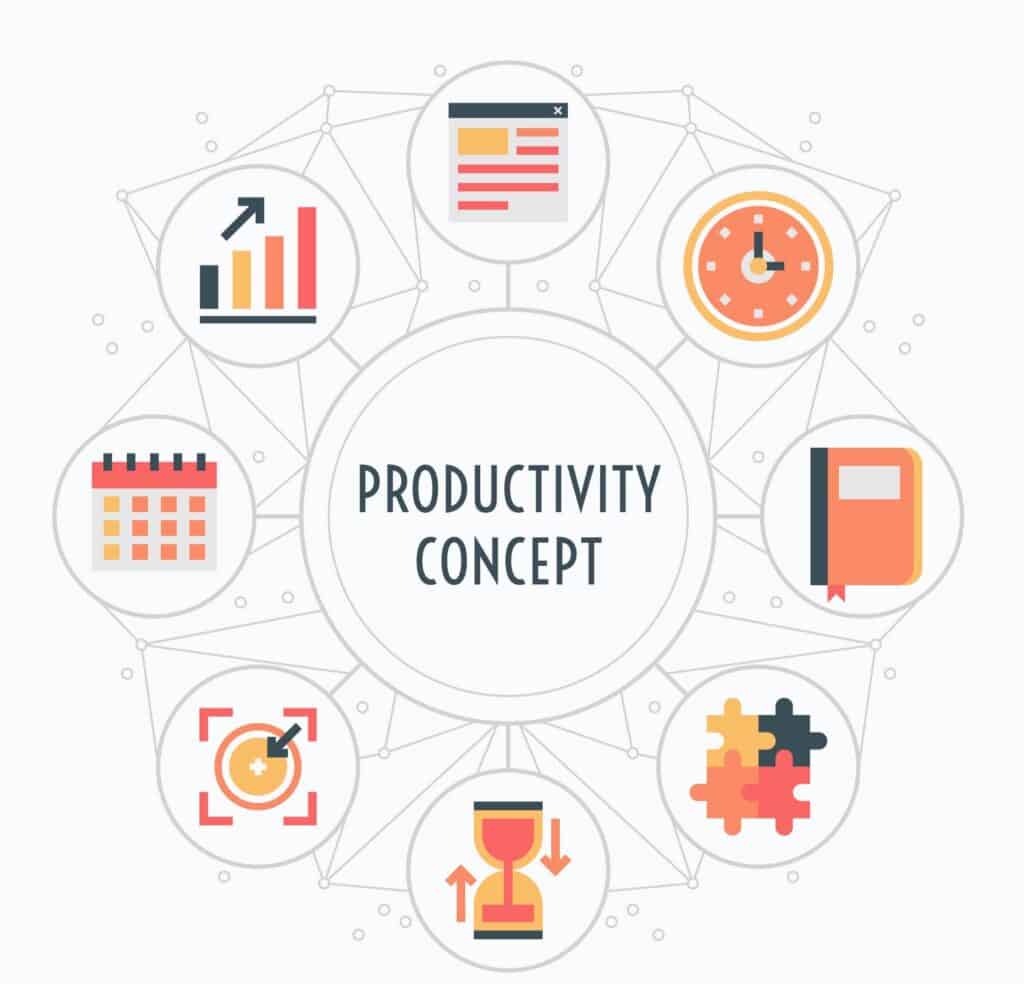
Many WordPress agencies and providers struggle with maintaining consistent project success usually because of scope creep, poor planning, or clients who don’t comply with the schedule.
This is where Beth Livingston and The 6 Productivity Principles for WordPress Project Success can help!
Derived from John Keane’s principles for systems development in the early ’90s, these 6 principles, when applied correctly, will help you achieve stress-free WordPress project management and consistent project success.
What exactly is project success?
Most experts agree that project success means getting your projects done on time, within budget, with features that meet the client’s business requirements, and most importantly, while retaining your planned profit margin.
Why projects typically fail
- Too precise an estimate too early: Rushing into an estimate early and without a solid discovery process can lead to your client having additional needs that they assumed you knew about.
- Scope creep: Clients love asking for “one little thing” which you will do to be nice and because it won’t take long. But, it’s these requests that tend to grow and grow when you haven’t taken the time to plan out the project.
- Content-related delays: The content collection bottleneck is a significant pain point for agencies and companies. What happens when the client is late with their content or misses deadlines? While you’re not to blame for their delays, it’s your timelines that are affected. You have to reschedule assisting staff or start other projects while you wait, costing you time and money.
- Un-ending review cycles: Finally, you turn things in. You know you’ve hit all the key points and deliverables, but now that they see what they asked for, they want to make changes.
The 6 principles for WordPress project success
The 6 principles are essential methods for being productive when carrying out a task or set of tasks. They can be equally applied to any kind of project you do, be it website development, fund-raisers, or home improvement projects. Often you’re doing them already without realizing it.
It’s worth noting before we get too deep that a plan is just that, a plan. It is not a fixed roadmap with a single best route but more like how your GPS works. If you take a left on the wrong street, the route corrects and updates based on what you’ve done.
Establish this potential for adaptation from the beginning and remind your clients about this as the project moves forward. Even the most perfectly laid plans will need adjustments and fixes.
| Keans’ Original Principles | WordPress Application |
| 1. Define the job in detail | Define the job in detail with a content-first approach |
| 2. Get the right people involved | Get the right resources involved |
| 3. Estimate the time and costs | Estimate the time and costs OFTEN |
| 4. Break the job down | Break the job down |
| 5. Establish a change procedure | Establish and stick to a change procedure |
| 6. Agree on acceptance criteria | Agree on interim and final acceptance criteria |
1. Define the job in detail with a content-first approach
First, consider all of the content and create a range costing. Once your client has accepted this, you can get stuck into phase one, a planning-focussed deep dive discovery. You can position this as a separate project and charge accordingly, but be sure that your initial holding deposit covers this work.
You might learn that the project will actually be much larger than originally planned and will require a higher estimate so give the client the option to cancel the project at this stage.
Now that you have a full website spec, you can create a project estimate based on everything you have learned. If you make your estimation process repeatable, you will get better at it over time.
- Focus on business requirements: Don’t ask your client things like what websites they prefer or what they want it to look like. Instead, ask what their goals are for the website and what do they want it to accomplish for the business.
- Never give too precise an estimate too early: Stop giving quotes! Change is inevitable so instead of fighting it, learn to expect and manage the change that comes.
- Always estimate content: Estimate the rough order and magnitude of the content, and then the time it will take based on the resources you have need.
- Position the project plan for content first: Structure in such a way that even if the client disappears or stalls, you are still getting paid for the work you’ve done.
- Structure the payment schedule with proper milestones: Never begin design or development until the content-related activities are completed.
The advantages of a content-first approach are that you will get paid for the discovery, development time is sped up significantly, you’ll prevent content-related delays on the project, and prevent scope creep.
2. Get the Right Resources Involved
The advantages of setting a resource principal to your WordPress projects are that it sets the proper client expectations, speeds development, and prevents wasted time. Your resources can include hosting, people, plugins and themes, blocks and templates, outsourcing, etc
It is advisable that your clients do not write their own content so it is especially worth retaining a copywriter in your pocket. If you are in need of a reliable, experienced, and kick-ass copywriter, GoWP offers a dedicated copywriter service.
The best practice is to define all the roles and responsibilities for the project. While it is tempting to sell yourself as a worker bee, you need to make the client a part of the team. After all, this is their site and they will have opinions on the way it looks and functions.
Most importantly, be sure to define who has final approvals over different parts of the project and who reports to who clearly. Not defining management resources will cause issues down the line in the project. Then, you can define all of your processes.
- Proposal process: What resources are going to be used on the project.
- Client management: How are you going to incentivize the client to comply with the schedule and what penalties exist for the client if they don’t follow through with their parts of the project.
- Technical approach: What are the technical resources that you use on your projects. Consider compatibility between software and hardware (e.g. device/browser) that you’ll use and manage.
- Communication plan – What are the channels and boundaries for communication.
3. Estimate the time and costs, often!
You need to estimate the time and costs at the beginning of the project (obviously) and usually at the end of each phase. Also, any time there is a change of scope, management, tools, or procedures and at the end of each reporting period. You might not need to do all of this but don’t be afraid to reestimate. One estimate at the beginning does not rule the entire project.
By repeating the estimation process, you will get better at estimating and increase the accuracy of your estimates. It will also help reduce surprises for yourself and the client.
- Stop giving quotes, give estimates: Do not attempt to estimate what you do not know. Abandon the crystal ball approach and refer back to the two-step proposal process in the first principle.
- Use a repeatable, defendable process: If you can’t explain it mathematically, it’s a guess.
- Never use a budget “pad”: If you just use a pad, you can’t keep track of what the unknowns were meaning you are likely to make the same mistakes again and won’t get better.
- Always estimate content: You have to do this to precisely estimate the time related to activities.
- Use a change budget: We’ll save this one for the fifth principle…
To support these best practices, you will need to implement the estimating, proposal, and change control processes as well as acceptance management.
4. Break the job down
Use a proven project plan with pre-determined milestones and customize it for each project. Now you can break the job down into easily manageable chunks – phases, activities, tasks, or a time period – each ending in a tangible deliverable. The final step is to request approval at the end of each milestone to ensure the project is on track.
This method reduces client overwhelm, speeds up development, and speeds up the final approval. Your requirements definition process will need to be practiced and implemented in every project.
5. Establish and stick to a change procedure
A change procedure requires you to establish a method of actively managing change throughout the project. The point here is that you and your client must acknowledge that change is inevitable and you need to invoke the procedure without exception.
- Embrace change: It is inevitable so embrace it!
- Educate the client: Be honest with scope creep, how it negatively impacts everybody, and how you will manage it.
- Position change as an opportunity: Be realistic about the current remit deadlines and build changes into a “phase two” list. (The change control process is always an alternative solution.)
- Use the minimum viable website approach: Use the clients’ current content to deliver a website that meets their minimum requirements and then get client feedback to develop a phase two plan for further development.
- Always use a change budget: Take 20-30% of the estimated budget and set it aside only to be used in the event of a change to the remit of work. Write up requested changes and pass them on to the project manager. The client makes the final decision of whether the money is moved from the change budget to the main budget. Putting this decision in their hands will inevitably cut down on change requests.
For the change procedure, you will need the requirements definition, estimating, and change management/control processes along with acceptance management.
6. Agree on interim and final acceptance criteria
You want to agree on the rules that govern acceptance before the deliverable is created. This is your interim and financial acceptance criteria. By determining in advance what constitutes the acceptable outcome for each deliverable, you will set proper client expectations.
- Establish project criteria in the proposal.
- Establish criteria for other deliverables before you create them.
- Use test plans: These are your checklists.
- Acceptance: This always needs to be provided in writing.
The most critical principle?
There is one principle that is the most important because it sets the project off on the right track. That is to define the job in detail with a content-first approach. Much of what is involved in the other principles are part of defining the job in detail.
If you would like to learn more about how to apply these principles to your project management lifecycle, and how to craft and implement related processes, you can sign up for the WP Project Manager’s Academy and get certified after completing the free program!






